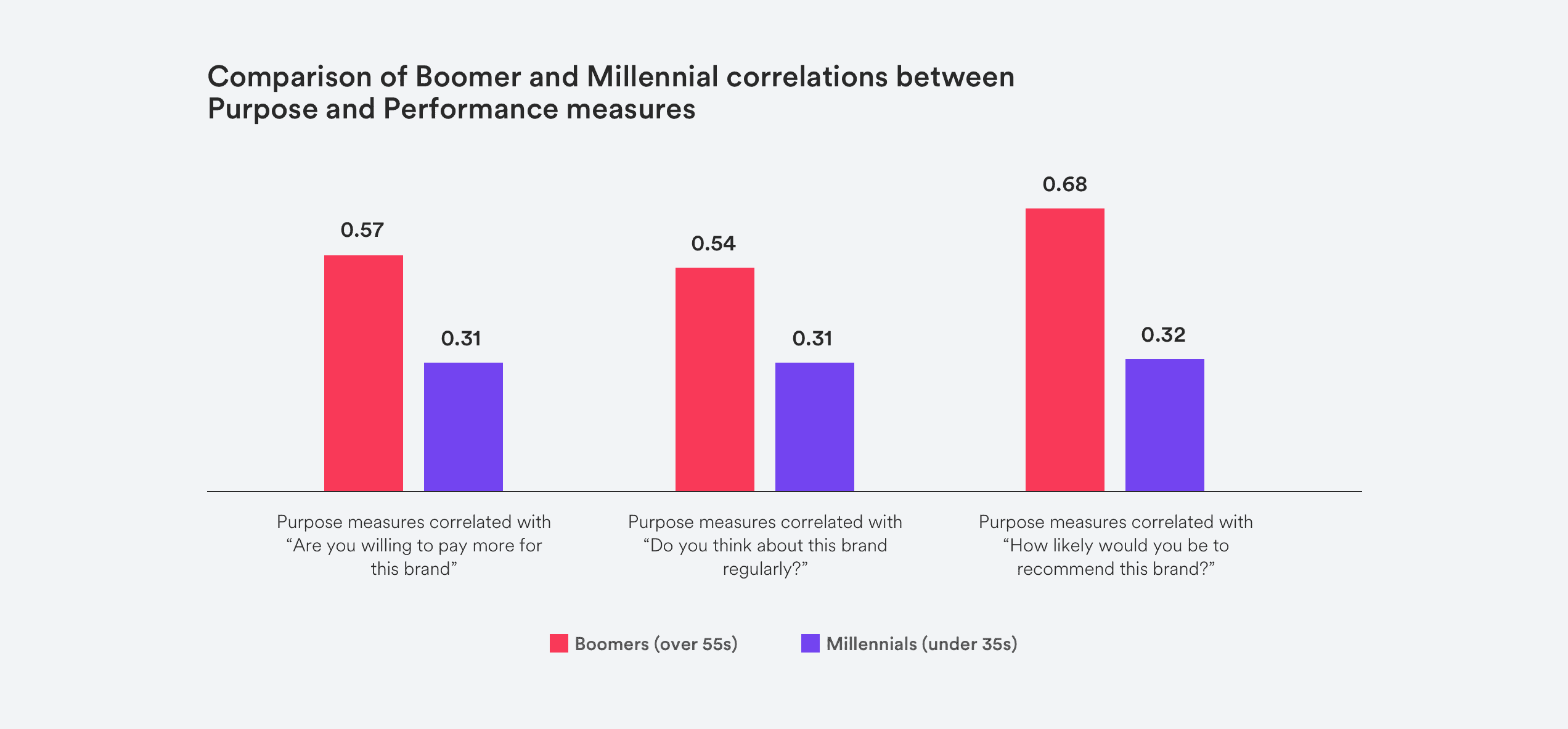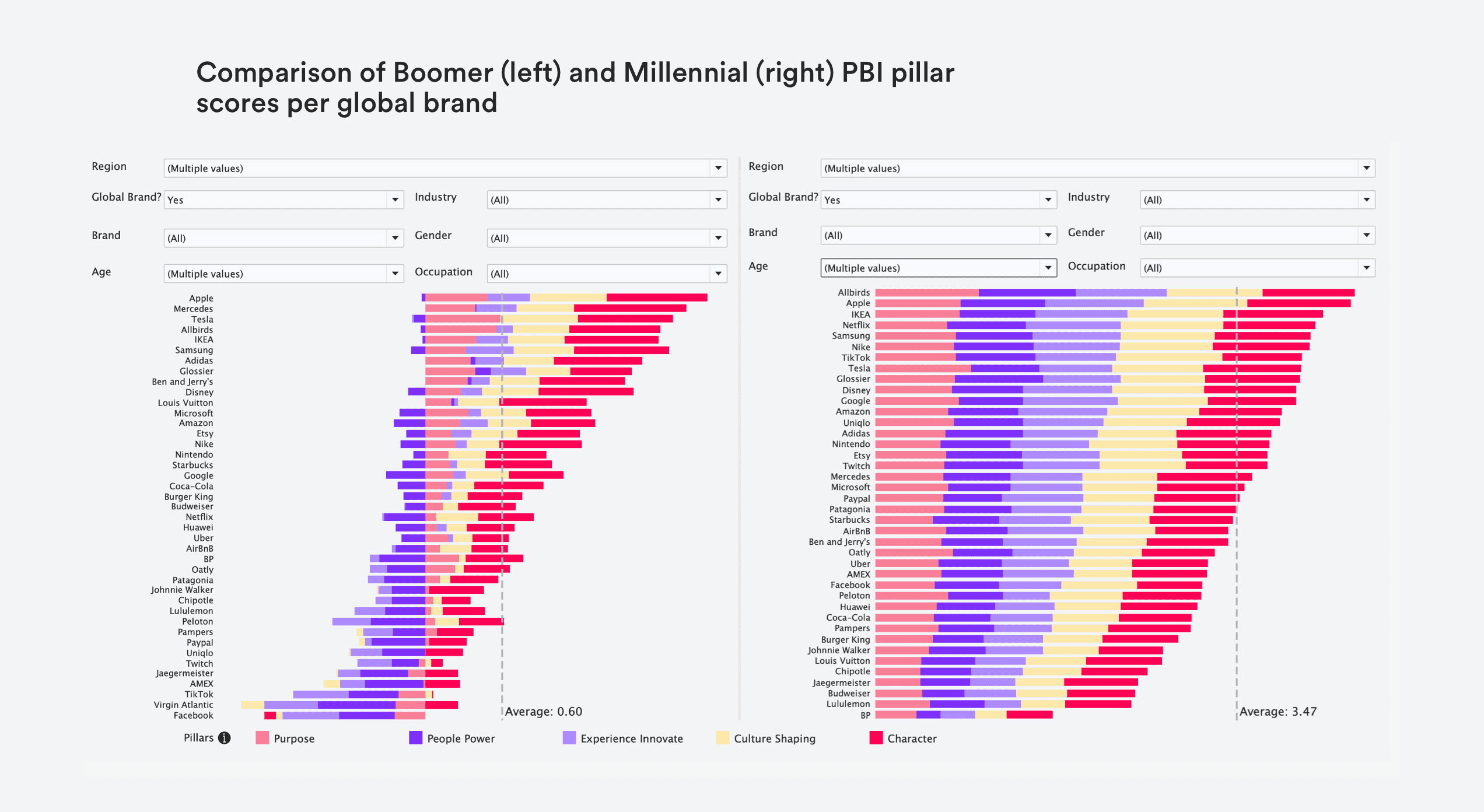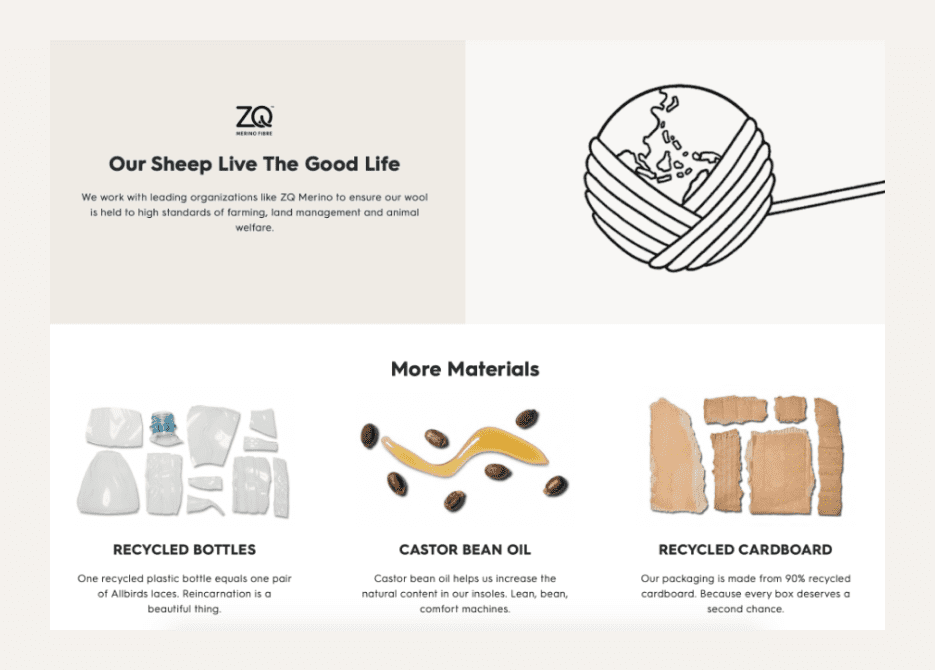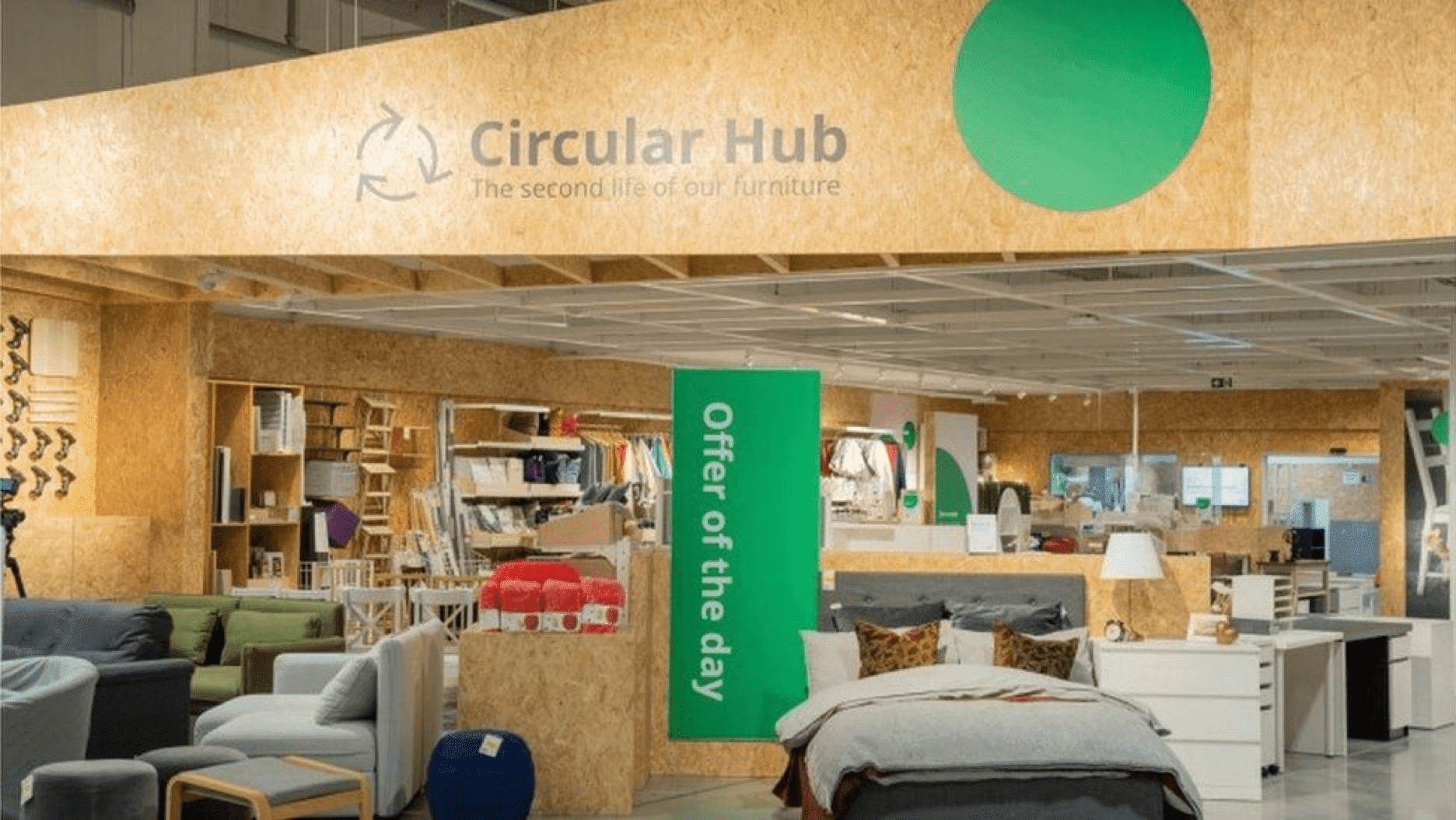Conventional marketing wisdom dictates that purpose-led marketing appeals to Millennials.
Indeed, our Participation Brand Index supports this, showing positive correlations between the purpose and performance measures in the study for Millennials (18-34s). However, remarkably, the Participation Brand Index also shows that Boomers (55+) have even stronger positive correlations across the same purpose and performance measures.

Comparison of Boomer and Millennial correlations between Purpose and Performance measures
As you can see from the data in visualised above, Fig A Boomers are almost twice as likely as Millennials to think about your brand regularly; be willing to pay more for its products; and recommend the brand when it has a clearly defined purpose. On the face of it, this seems counter-intuitive. As I mentioned, we typically think of purpose-led marketing as being something brands should target at their Millennial (and Gen Z) audiences. However, it would appear we need to reconsider this groupthink and ensure that our brand purposes are inclusive and actively engage Boomers as much as Millennials.
For us, purpose has a number of attributes.
At its heart, a purposeful brand is one that stands for something it believes in. It needs to clearly articulate a positive vision and then be actively and visibly making it happen over the long term. It’s not about what the brand says, it’s fundamentally about what the brand does.
Typically, when we think about purpose, we jump to topics such championing social issues (such as Black Lives Matter, gender inequality, etc.) or making a positive impact on the environment – not least as these are some of the most pressing issues we face as a society today. Certainly businesses and brands have a lot of impact on both issues – be it who they employ and how they treat them; or what they extract from the planet and what lasting impact their products and industrial processes have on our ecosystem.
As we fundamentally care about participation, we also consider that purpose should be a collaborative effort where ‘brands help me make a difference to my community’. People care deeply about matters such as social justice and sustainability and want ways to make a difference. Brands that understand and facilitate this are able to better align and advance their purpose together with society.
Finally, if a brand can clearly define what it stands for, and is able to make meaningful progress toward that vision and make the world a better place then fundamentally that brand is shaping the future. It is not only evolving with the times, but playing an active role in shaping the world we live in.
Back to our insight that Boomers are more strongly influenced by brand purpose than Millennials.
I think this could be an extension of a trend that various behavioural studies have highlighted in the world of sustainability – namely that whilst Millennials say they are concerned about the impact of climate change, Boomers are actually making more sustainable choices than their Millennial counterparts. Researchers in the UK and the US have highlighted this Millennial intention-action gap that Boomers are managing to bridge. Similarly, we might consider that whilst Millennials say they want brands with greater purpose, it is Boomers who are actively participating with purposeful brands.
Moreover, if we look at the chart below it becomes clear that Boomers are much more discerning about which brands they consider to be purposeful, relative to their Millennial counterparts.

Whilst Millennials say they want brands with greater purpose, it is Boomers who are actively participating in and with purposeful brands.

Comparison of Boomer (left) and Millennial (right) Participation Brand Index pillar scores per global brand
Perhaps then, we can say that if a brand wishes to engage a Boomer audience around purpose – be it social, environmental or technological – the barrier to entry is higher than for Millennials, but the rewards if you win them over are much greater. This means that a policy of ‘show don’t tell’ will be key. It’s not enough to tell your audience you’re reducing your environmental impact, or giving back to communities. You actively need to show it – prove it.
Looking at some of the top performing purpose brands for both Boomers and Millennials we can see evidence of this strategy in action.
Allbirds – for example – do a great job of bringing its product truth to life, showing exactly how and why it is sustainable and kinder to the planet. By getting specific about materials and processes it becomes clear that Allbirds is sustainable by design, rather than just a veneer.

Allbirds clearly articulates its sustainability purpose through product truth
Taking another example, IKEA’s commitment to becoming people and planet positive helped it score highly for purpose in the Participation Brand Index. The recent launch of its buy-back scheme is just the latest in a number of visible, tangible steps it has taken to clearly evidence its purpose.

IKEA’s ‘Circular Hubs’ in each store are the place to go for customers to sell old IKEA furniture back to the company, or buy a second-hand piece at a reduced cost
In both cases, what marks out these brands is a commitment to showing their purpose in action, rather than merely saying they have a purpose. By way of contrast, Facebook – who ranked low for purpose with Boomers and Millennials – has spent a lot of time saying it is committed to positive [social] change, but comes up short in terms of tangible evidence of progress, with many criticising a lack of commitment and/or results.
In summary, Boomers who believe your brand has purpose are almost twice as likely to pay more for it, keep it front of mind and recommend it to their friends than Millennials. However, convincing Boomers of your purpose is not easy. They will judge you to a higher standard than Millennials. The best way to ensure you win them over is through a strategy of ‘show, don’t tell’. So, next time you’re discussing your brand’s purpose, make sure you actively consider how to engage Boomers and enable them to participate – the planet and your bottom line will thank you for it!